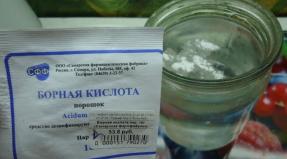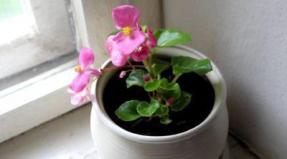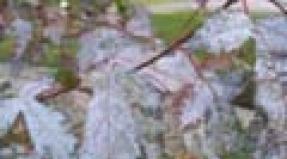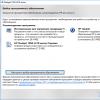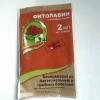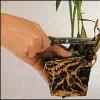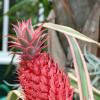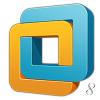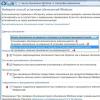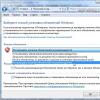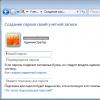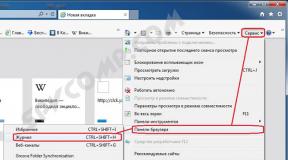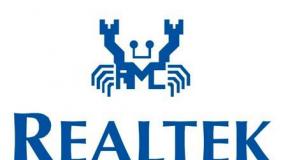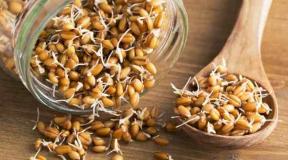ACC Powder Application Instruction. Powder, syrup and tablets for children ACC - instructions for use and analogues. Vacation conditions and price
Registration number: N015474 / 01
Trade name of the drug: ACS®
International unpatient name: Acetylcysteine.
Dosage form: Granules for the preparation of a solution for intake (orange).
Structure:
1 bag contains:
- active substance: acetylcysteine \u200b\u200b- 100.0 / 200.0 mg;
- excipients: sucrose in 2829.5 / 2717.0 mg; Ascorbic acid -12.5 / 25.0 mg; Sakharin - 8.0 / 8.0 mg; Aromatizer orange - 50.0 / 50.0 mg.
Description: Uniform white granules without agglomerates with an orange smell.
Pharmacotherapeutic Group: Mukolithic.
ATH code: R05CB01.
Pharmacological properties
Pharmacodynamics
Acetylcysteine \u200b\u200bis a derivative of cysteine \u200b\u200bamino acid. It has a musical action, makes it easier to the debit of sputum due to direct impact on the rheological properties of sputum. The action is due to the ability to break disulfide bonds of mucopolysaccharide chains and cause depolymerization of sputum mucoproteins, which leads to a decrease in sputum viscosity. The drug retains activity in the presence of purulent sputum.
It has an antioxidant effect based on the ability of its reactive sulfhydryl groups (SH-Group) to bind to oxidative radicals and, thus, neutralize them. In addition, acetylcysteine \u200b\u200bcontributes to glutathione synthesis, an important component of the antioxidant system and chemical detoxification of the body. The antioxidant effect of acetylcysteine \u200b\u200bincreases the protection of cells from the damaging effect of free radical oxidation, characteristic of the intense inflammatory reaction.
For preventive application Acetylcisteine \u200b\u200bnotes a decrease in the frequency and severity of exacerbations of bacterial etiology in patients with chronic bronchitis and cystic cycidosis.
Pharmacokinetics
Absorption high. Quickly metabolized in the liver to form a pharmacologically active metabolite - cysteine, as well as diacetylcisteine; Custine and mixed disulfides. Bioavailability at oral administration It is 10% (due to the presence of the pronounced effect of the "first passage" through the liver). The time to achieve maximum concentration (Cmax) in the blood plasma is 1-3 hours. Communication with blood plasma proteins - 50%. It is removed mainly by the kidneys in the form of inactive metabolites (inorganic sulfates, diacetylcysteine). The half-life (T1 / 2) period is about 1 hour, the violation of the liver function leads to the elongation of T1 / 2 to 8 hours. Penetrates through a placental barrier. Data on the ability of acetylcysteine \u200b\u200bto penetrate the hematorecephalic barrier and stand out with breast milk No missing.
Indications for use
Diseases of the respiratory organs, accompanied by the formation of a viscous hardwood sputum:
- acute and obstructive bronchitis;
- , laryngotrachite;
- , lung abscess;
- bronchiectatic disease;
- bronchial asthma;
- (COPD);
- broncholites, fibrousosis.
Acute and chronic sinusitis, inflammation of the middle ear (Middle Otitis).
Contraindications
- increased sensitivity to acetylcysteine \u200b\u200bor other components of the drug;
- ulcer of the stomach and duodenal gut in the stages of exacerbation;
- hemopying, pulmonary bleeding;
- sakaraz / isomaltase deficiency, fructose intolerance, glucose-galactose failure;
- pregnancy;
- period breastfeeding;
- children's age up to 2 years (for this dosage form).
Carefully:
ulcerative disease of the stomach and duodenal intestine in history, arterial hypertension, bronchial asthma, obstructive bronchitis, and / or intolerance of histamine (long-term intake of the drug should be avoided, because Acetylcysteine \u200b\u200baffects the metabolism of histamine and can lead to signs of intolerance, such as headache, vasomotor rhinitis, itching), varicose extension veins of the esophagus, adrenal diseases.
Application during pregnancy and in breastfeeding period
Data on the use of acetylcysteine \u200b\u200bduring pregnancy and breastfeeding is limited, therefore the use of the drug during pregnancy is contraindicated. If necessary, the use of the drug during breastfeeding period should be resolved about its termination.
Mode of application
Granules should be dissolved in water, juice or cold tea and take after eating. Additional fluid intake enhances the musolitic effect of the drug.
With short-term walled diseases The duration of the course is 5-7 days. With long diseases, the course of therapy is determined by the attending physician. For chronic bronchitis And the drug should be taken for a longer time to achieve a prophylactic effect in infections. In the absence of other assignments, it is recommended to follow the following dosages:
Mulitatic therapy:
- adults and adolescents older than 14 years old: 2 ACC® 100 mg packets or 1 sachets of the ACC® 200 mg 2-3 times a day (400-600 mg. In the day);
- children from 6 to 14 years old: 1 bag 3 times a day or 2 bags 2 times a day ACC® 100 mg (300-400 mg per day). ACC® 200 mg should be taken 3 times a day for 1/2 bag or 2 times a day for 1 bag (300-400 mg per day);
- children from 2 to 6 years: 1 Packet of the ACC® 100 mg or 1/2 Package ACC® 200 mg 2-3 times a day (200-300 mg per day).
Mukobovysidosis:
- children over 6 years old: 2 ACC® 100 mg or 1 Packets of the ACC® 200 mg 3 times a day (600 mg per day);
- children from 2 to 6 years: 1 Packet of the ACC® 100 mg or 1/2 Packet of the ACC® 200 mg 4 times a day (400 mg per day);
- patients with body weight\u003e 30 kg: If necessary, an increase in dose is possible up to 800 mg.
Side effect
According to the World Health Organization (WHO), undesirable effects are classified according to their development frequency as follows: Very often (\u003e 1/10), often (\u003e 1/100,<1/10), нечасто (>1/1000, <1/100), редко (>1/10000, <1/1000) и очень редко (<1/10000); частота неизвестна (частоту возникновения явлений нельзя определить на основании имеющихся данных).
Allergic reactions:
infrequently: skin itching, rash, examine, angioedema edema, decrease in blood pressure, tachycardia;
very rarely: anaphylactic reactions up to anaphylactic shock, Stevens-Johnson syndrome,
toxic epidermal necrolis (Lailel syndrome).
From the respiratory system:
rarely:, bronchospasm (mainly in patients with the hyperreactivity of bronchi at bronchial asthma).
From the gastrointestinal tract:
infrequently: stomatitis, abdominal pain, nausea, vomiting, diarrhea, heartburn, dyspepsia.
From the senses:
infrequently: noise in the ears.
Others:
very rarely: Headache, fever, single messages about the development of bleeding due to the presence of an increased sensitivity reaction, reduced platelet aggregation.
Overdose
Acetylcysteine \u200b\u200bwhen receiving in doses of 500 mg / kg / day does not cause signs and symptoms of overdose. With erroneous or deliberate overdose, there are such phenomena as diarrhea, vomiting, stomach pain, heartburn and nausea.
Treatment: symptomatic.
Interaction with other drugs
With the simultaneous use of acetylcysteine \u200b\u200band due to the suppression of the cough reflex, wet wet may occur.
With simultaneous use with antibiotics for oral administration (penicillins, tetracycles, cephalosporins, etc.), their interaction with the thiol group of acetylcysteine \u200b\u200bis possible, which can lead to a decrease in their antibacterial activity. Therefore, the interval between the intake of antibiotics and acetylcysteine \u200b\u200bshould be at least 2h (except for the zephixime and lurecarbef):
Simultaneous reception with vasodilating agents and nitroglycerin can lead to an increase in the vasodilator.
special instructions
In the treatment of patients with diabetes, it is necessary to take into account that the preparation contains sucrose.
Note for patients with diabetes mellitus:
- 1 Package ACC® 100 mg corresponds to 0.24 x.
- 1 ACC® 200 mg bag corresponds to 0.23 x.
When working with the drug, it is necessary to use glass dishes, avoid contact with metals, rubber, oxygen, easily oxidizing substances.
When using acetylcysteine, it was very rarely reported on cases of developing severe allergic reactions, such as Stevens-Johnson syndrome and toxic epidermal necrolis (Layella syndrome).
In the event of changes in the skin and mucous membranes, it is necessary to immediately consult a doctor, the reception of the drug must be stopped.
Do not take the drug immediately before bedtime (it is recommended to take the drug until 18.00).
Impact on the ability to control vehicles, mechanisms
Data on the negative effects of the drug ACS® in recommended doses to the ability to control vehicles and perform other activities requiring the concentration of attention and speed of psychomotor reactions, no.
Special precautions in the destruction of an unused drug is not necessary in special precautions when destroying the unused drug ACS®.
Form release
3 g of granules in a bag of combined material (aluminum foil / paper / polyethylene). 20 and 50 bags in a cardboard pack together with instructions for use.
Storage conditions
At a temperature not higher than 25 ° C.
Keep out of the reach of children.
Shelf life
Do not use after the expiration date.
Conditions of vacation
Without recipe.
Manufacturer
Sandoz DD, Verovshkova 57, 1000 g. Ljubljana, Slovenia; Produced: Lindofarm GmbH, Neustraße 82, 40721 Hilden, Germany. Consumer claims to send to Sandoz CJSC.
In the presence of a strong cough, accompanied by poorly discontinued sputum, treatment should begin with the reception of drugs aimed at improving the rheological properties of the secretion of the Secret. After taking such drugs, the mucus becomes less viscous and faster from the respiratory tubes, which gives more space for the air pass and updating the mucous layer. To one of these drugs include the "ACC" powder. For comfortable and effective treatment, you should first decide on how to properly breed the "ACC" -200 powder.
What is part of the powder
"ACS-200" is a powder made of small granular particles. One bag contains 200 mg of active funds. The preparation includes the following components:
- acetyline;
- extreme substances - flavors of honey, citrus, sucrose, saccharin, as well as ascorbic acid.
Small granules in powder painted white, less often in yellow. If we sniff out, you can feel the smell of citrus and honey.
How affects the human body
The powder "ACC-200" soluble refers to the group of expectorant drugs of a musolitic type that helps speed up the process of removing the patient sputum accumulated in bronchi.

Acetylcysteine \u200b\u200bhelps to achieve such good results, which affects the rheological properties of bronchial mucus (enhances its fluidity). Such a component is effective even when it is detected in the wet wet bunches of the pus.
When you need to start receiving
The drug instructions indicate the main diseases leading to the appearance of acute cough. Start receiving the ACC powder recommended for the following processes:
- fibergation;
- bronchiolitis, Cobl, Bronchial Asthma, Bronchiectatic disease
- lung abscess;
- actively developing pneumonia;
- acute, chronic or obstructive bronchitis;
- tracheit and laryngotrachite.
To determine how to dilute the "ADC" -poshok, consider in detail the instructions for receiving the drug.
Instructions, how to breed the powder "ATSTS-200"
How to accept the tool? How to breed the powder "ATSTS" (200 mg)? Before breeding the drug, you should read the instructions for the medicine once again. Only strict adherence to the dosage and reception rules will help achieve a good effect and lack of adverse reactions. There are no features in the procedure, it is enough to perform the following steps:
- packing with granules inside should be unpaved, cutting with scissors or breaking the upper edge;
- sleep the content in the deep bowl;
- pour the preparation with hot water (enough 200 ml).

If you start gently stir the mixture with a spoon, you can achieve faster dilution of the drug. In the instructions, how to breed the powder "ACC", it is indicated that water should be used hot.
How to take a drug for wet wet
To achieve the maximum effect of the medication, the question of its proper reception should also be disassembled. The following features are taken into account:
- according to the instructions, the finished mixture should be directed immediately after preparation (the temperature should remain hot) after eating;
- when using a solution during a cold and cough, the active components of the medication are faster in the blood flow and distributed by the body, which leads to a mukolotic effect;
- if the patient has a febrile, then before use, the prepared mixture should be cooled to room temperature;
- do not leave a ready-made mixture for a period of more than 3 hours after cooking, as such a composition is no longer suitable and will not bring any result.
The soluble drug "ACC" can be used by children older than the age of 6 and adults. Maximum dosage for a child up to 14 years - 600 mg per day, evenly distributed to several techniques. It is forbidden to appoint a dosage on your own, for this you need to consult a doctor.

How to breed the powder "ATSTS"? Instructions for use permits together with it to take other heated fluids, because they will only strengthen the mucological effect and speed up the process of recovery.
Duration of medication
Before taking any medication, the patient is obliged to study all possible contraindications and adverse reactions. Knowledge of such information will help to decide whether it is possible to take such a drug in a particular situation. The main contraindications "ACS-200" include:
- the beginning of the progression of ulcers;
- the presence of bleeding in the lungs or blood isolation along with the mocroid;
- in the presence of any kind of glucose-galactose failure;
- women carrying a child and nursing breast milk;
- children who have not yet turned 6 years old.

In addition, it is forbidden to use a drug to patients with an increased allergic reaction to additional components in the composition either to the main active substance.
Especially carefully taking the "ACC" in the form of powder need to be sick:
- hypertension;
- bronchial asthma (with an exacerbated state is prohibited at all);
- yazzenny diseases;
- adrenal diseases;
- allergies to histamine;
- kidney or liver failure.
It is also important to remember that the use of medicines, especially prolonged, may in any time provoke the appearance of a negative reaction - allergies, breathing problems, dyspeptic disorders and the other. Most often, the state of this type occurs as a result of an overdose.
Reviews of the reception of the drug "ATSTS"
For several decades in the market of pharmacological funds, the leading position occupies a means of "ACC", and the reviews about this drug are mostly continued to remain positive.
According to the estimates of the physicians, the powder leads to side reactions in very rare cases. Many call such a drug main in a home pharmacy.

But there are some distinctive features that consumers related to disadvantages:
- large list of contraindications, because of what many are simply afraid to start receiving funds;
- it is impossible to use during the tooling of the child and feeding with milk;
- unavailable for children of age up to six years.
How to take in childhood
Pick up any medicinal to the child is quite difficult. Children not only show high sensitivity to medicines, but can also be capricious if the tool has an unpleasant taste or repulsive odor.

The manufacturer of the "ACC" powder produces a variety of forms of the drug suitable for a certain age. They are distinguished by a large number of additional components in the composition and other dose of the active substance. Take the "ACC-100" you can children older than age 2 years old.
Rules for breeding funds
How to breed powder "ATSTS"? The designated drug must be used by following all prescriptions of the attending physician. It is important to remember the presence of some contraindications and even strict restrictions.
Unlike other medicines, milking powder "ACC" can be quickly and easily. It will not require much time and effort. In the instructions, how to breed it says that the contents of the bag should be poured into a separate container, pour water and mix thoroughly. It is best to prepare a consistency in a glass cup. It is impossible to use plastic and metal cups for these purposes. Experts recommend to give a child a solution immediately after its preparation.
What water to use for dissolution
How to breed the "Atsz" powder in order not to exceed the dosage and prevent side reactions? Components included in the means are allowed to apply simple water to create a solution. The resulting mixture does not exude an unpleasant smell and the sweet taste, which will definitely like the baby.
But before cooking the remedy, it is important to consider that water should only be used boiled and hot. The instructions for receiving the medication states that breeding powder is prohibited.
Compliance with the correctness of the reception
Only in the event that the parent will comply with the basic rules for the reception of the ACC powder, he will be able to achieve a rapid and trouble-free recovery of the child. Acetyistine powder, according to the instructions, should be used according to the following scheme:
- Aged 2 to 6 years old - a whole package or half a half 4 times a day (maximum day dosage - from 200 to 400 mg, which will depend on body weight).
- Children aged from 6 to 14 years old can be consumed one bag three times a day or two bags - 2 times. The daily dose does not exceed 400 mg.
- Adolescents older than 14 years old are allowed to use two bags three times a day (no more than 600 mg dosage).
The described treatment schemes for children of different ages carry a good effect when dealing with any disease from those specified in the instructions, eliminating cystic fibrosis. To treat the disease to children of age from 2 to 6 years, they write 1 package four times a day, after 6 years the number of bags is increased to two, and the number of techniques - to 3. If the child weighs more than 30 kg, then the daily dosage can increase a little.
Treatment time with such a means should not exceed the week. In the presence of a disease in chronic form or during the prevention of exacerbation, the treatment time may increase, but the final decision will take the doctor.
What you need to know the parent
Often, for integrated treatment, the therapists prescribe an additional intake of antibiotics. The joint use of powder and some antibiotics can provoke reduced activity of the latter.
According to the instructions, use the "ADC" in the form of a powder immediately after antibiotics. In this case, the drug cannot be combined with vasodilatory medicines. The combination of such drugs may result in a strong vasodilant effect.
Before breeding the granules "ACC", it is recommended to learn about the basic contraindications. This can be attributed:
- diabetes;
- ulcerative disease at the time of exacerbation;
- in the presence of an allergic reaction to substances in the composition of the funds;
- the formation of blood clots in sputum.
Use a medication during pregnancy is prohibited, since there is a risk of penetration of the active components of the drug into the oilyotic water. With caution to use "ACC" needed in the presence of fibrosis, purulent discharge, hepatic and renal failure, problems with the functioning of the urinary system.
Analogs of "ACC"
If for certain reasons it is impossible to take an acetyline patient, then you can pay attention to other drugs that the doctor will help to pick up the doctor. The main analogues include "VixaBiva", "Expenetted", Montaeks and Acetylcistein.
"Visakive" is produced in Germany and carries an expectorant and musolitic effect. Appointed children over two years.
"Acetylcistein" is produced in the form of a hip powder and tablets. Before breeding medication for a child, it is important to consider that it is not accepted with dry cough. Analogs have the same contraindications.
Pick up the analog "ACC" and determine the dosage and duration of the course of treatment of the disease will help the attending physician after consulting and identifying the characteristics of the patient's body.
N015474 / 01
Trade name of the drug:
ACS®
International UnPatented Name:
acetylcistein (AcetyLCysteine)
Chemical name ACS®:
N.-acetyl - L.-cysteine
Drug form ACS®:
granules for the preparation of a solution for intake (orange).
Structure ACS® :
1 package granules weighing 3 g for the preparation of a solution for reception inside contains: 100 mg or 200 mg of acetylcysteine,
excipients: Sakharaosis, ascorbic acid, saccharin, orange flavoring.
Description ACS® granules for making a solution:
Uniform white granules without agglomerated particles with an orange smell.
Pharmacological properties:
Pharmacotherapeutic Group:
mukolithic.
ATH code:
R05CB01
Pharmacodynamics:
The presence in the structure of acetylcysteine \u200b\u200bsulfhydryl groups contributes to the rupture of disulfide bonds of sour mucopolysaccharides of sputum, which leads to a decrease in the viscosity of the mucus. The drug retains activity in the presence of purulent sputum.
With prophylactic use of acetylcysteine, there is a decrease in the frequency and severity of exacerbations in patients with chronic bronchitis and cystic acid.
Indications for use ACS® granules for making a solution:
Respiratory diseases, accompanied by the formation of a viscous hardwood sputum: acute and chronic bronchitis, obstructive bronchitis, laryngotrachite, pneumonia, bronchiectases, bronchial asthma, bronchiolites, fibrousosis. Acute and chronic sinusits, inflammation of the middle ear (average otitis).
Contraindications:
Increased sensitivity with respect to acetylcystein or other components of the drug, pregnancy, breastfeeding, children's age up to 2 years.
Carefully
ulcerative ulcer of the stomach and duodenal intestine in the aggravation stage;
hemochkali, pulmonary bleeding, varicose veins of the esophagus, bronchial asthma, adrenal diseases, hepatic and / or renal failure.
Pregnancy and breastfeeding period:
In safety measures, due to insufficient data, the appointment of the drug during pregnancy and breastfeeding is possible only if the intended benefit for the mother exceeds the potential risk to the fetus or baby.
Dosage ACS® granules for making a solution:
Mulitatic therapy:
Adults and adolescents over 14 years old are recommended to take 2-3 times a day for 2 ACC® 100 mg or 1 Packet of ACC® 200 mg (400 - 600 mg per day).
Children aged 6 to 14 years It is recommended to take 3 times a day for 1 sachet or 2 times a day for 2 ACC® 100 mg (300 - 400 mg per day). ACS® 200 mg should be taken 3 times a day 1/2package or 2 times a day for 1 sachet (300 - 400 mg per day).
It is recommended to take 2-3 times a day for 1 BACKGE ACS® 100 mg or 1/2aCC® 200 mg (200 - 300 mg per day).
Mukobovysidosis:
Children over the age of 6 It is recommended to take 3 times a day for 2 ACC® 100 mg or 1 ACC® 200 mg package (600 mg per day).
Children aged 2 to 5 years It is recommended to take 4 times a day for 1 BACKGE ACS® 100 mg or 1/2package ACS® 200 mg (400 mg per day).
Patients with fibrosis and body weight of more than 30 kg if necessary, an increase in dose of up to 800 mg of acetylcysteine \u200b\u200bper day is possible.
Granules should be dissolved in water, juice or cold tea and take after eating.
Additional fluid intake enhances the musolitic effect of the drug.
With short-term colds, the duration of reception is 5-7 days. With prolonged diseases, the duration of therapy is determined by the attending physician. In chronic bronchitis and fibrosis, the drug should be taken for a longer time to achieve a prophylactic effect in infections.
Note for diabetes patients:
1 Packet ACC® 100 mg corresponds to 0.24BE.
1 Packet ACC® 200 mg corresponds to 0.23BE.
Side effects:
In rare cases, headaches are observed, inflammation of the mucous membrane of the mouth (stomatitis) and the noise in the ears. Extremely rarely - diarrhea, vomiting, heartburn and nausea, drop in blood pressure, increase the frequency of heart rate (tachycardia). In isolated cases, allergic reactions are observed, such as bronchospasm (mainly in patients with bronchi hyperreactivity), skin rash, itching and urticaria. In addition, there are single reports on the development of bleeding due to the presence of high sensitivity reactions.
When developing side effects, cancel the reception of the drug and consult a doctor.
Overdose:
With erroneous or deliberate overdose, there are such phenomena as diarrhea, vomiting, pain in the stomach, heartburn and nausea. So far, no heavy and life-threatening side effects have been observed.
Interaction with other means:
With the simultaneous use of acetylcysteine \u200b\u200bandantitussive tools Due to the suppression of the cough reflex, a stagnation may occur. Therefore, such combinations should be selected with caution.
Simultaneous reception of acetylcysteine \u200b\u200bandnitroglycerin It may lead to strengthening of the vasodilating action of the latter. Pharmaceutically incompatible with antibiotics (penicillins, cephalosporins, erythromycin,
tetracycline and amphotericin B) and proteolytic enzymes.
When contacting metals, rubber sulphides with a characteristic odor are formed.
Reduces the absorption of penicillins, cephalosporins, tetracycline (they should be taken no earlier than 2 hours after intake of acetylcysteine).
Special instructions:
Patients with bronchial asthma and obstructive bronchitis acetylcysteine \u200b\u200bshould be prescribed with caution under the systematic control of bronchial patency.
In the treatment of patients with diabetes, it is necessary to take into account that the preparation contains sucrose.
When working with the drug, it is necessary to use glass dishes, avoid contact with metals, rubber, oxygen, easily oxidizing substances.
Forms of release ACS® granules for making a solution:
3 g of granulate in three-layer material bags (aluminum-paper-polished). 20 or 50 bags in a cardboard pack together with instructions for use.
Storage conditions:
At a temperature not higher than 25 ° C. In an inaccessible place for children.
The shelf life of the drug:
4 years.
Do not use the expiration of the specified shelf life.
Vacation from pharmacies:
The drug is released without a doctor's prescription.
Manufacturer:
Hexal AG, produced Sabutas Pharma GmbH, Germany,
83607 Holzkirchen, Industriality 25, Germany.
Instruction
for the use of medicinal drug for medical use
Registration number:
N015473 / 01-180914
Trade name of the drug:
International UnPatented Name:
acetylcysteine.
Dosage form:
tablets are hidden.
Structure:
1 Shipying tablet contains:
active substance: Acetylcysteine \u200b\u200b- 200.00 mg; excipients: Anhydrous citric acid - 558.50 mg; sodium bicarbonate - 200.00 mg; sodium carbonate anhydrous - 100.00 mg; Mannitol - 60.00 mg; Anhydrous lactose - 70.00 mg; Ascorbic acid - 25.00 mg; sodium sacharinat - 6.00 mg; sodium citrate - 0.50 mg; Eromatizer Blackberry "B" - 20.00 mg.
Description: Round white plane-cylindrical tablets with risky on one side, with blackberry smell. Perhaps the presence of a weak sind.
Reduced solution:
Colorless transparent solution with blackberry smell. Perhaps the presence of a weak sind.
ATX code: R05SV01.
Pharmacological properties
Pharmacodynamics
Acetylcysteine \u200b\u200bis a derivative of cysteine \u200b\u200bamino acid. It has a musical action, makes it easier to the debit of sputum due to direct impact on the rheological properties of sputum. The action is due to the ability to break disulfide bonds of mucopolysaccharide chains and cause depolymerization of sputum mucoproteins, which leads to a decrease in sputum viscosity. The drug retains activity in the presence of purulent sputum.
It has an antioxidant effect based on the ability of its reactive sulfhydryl groups (SH-Group) to bind to oxidative radicals and, thus, neutralize them.
In addition, acetylcysteine \u200b\u200bcontributes to glutathione synthesis, an important component of the antioxidant system and chemical detoxification of the body. The antioxidant effect of acetylcysteine \u200b\u200bincreases the protection of cells from the damaging effect of free radical oxidation, characteristic of the intense inflammatory reaction.
With prophylactic use of acetylcysteine, there is a decrease in the frequency and severity of exacerbations of bacterial etiology in patients with chronic bronchitis and cystic cycling.
Pharmacokinetics
Absorption high. It is rapidly metabolized in the liver to form a pharmacologically active metabolite - cysteine, as well as diacetylcysteine, cystine and mixed disulfides. Bioavailability when taking inside is 10% (due to the presence of the pronounced effect of the "first passage" through the liver). The time to achieve maximum concentration (Cmax) in the blood plasma is 1-3 hours. Communication with blood plasma proteins - 50%. Excreted by kidneys in the form of inactive metabolites (inorganic sulfates, diacetylcysteine).
Half-life (T1 / 2) is about 1 h, violation of the liver function leads to an elongation of T1 / 2 to 8 hours. penetrates through a placental barrier.
Data on the ability of acetylcysteine \u200b\u200bto penetrate the hematostephalic barrier and there are no breast milk.
Indications for use
Diseases of the respiratory organs, accompanied by the formation of a viscous hardwood sputum:
acute and chronic bronchitis, obstructive bronchitis;
tracheitis, laryngotracheit;
pneumonia;
abscess lung;
bronchiectatic disease, bronchial asthma, chronic obstructive pulmonary disease (COPD), bronchiolites;
fibergation;
Acute and chronic sinusitis, inflammation of the middle ear (Middle Otitis).
Contraindications:
Increased sensitivity to acetylcysteine \u200b\u200bor other components of the drug;
ulcerative ulcer of the stomach and duodenal intestine in the aggravation stage;
pregnancy;
breastfeeding period;
hemopying, pulmonary bleeding;
lactase deficiency, lactose intolerance, glucose-galactose malabsorption;
Children's age up to 2 years (for this dosage form).
Carefully: ulcerative disease of the stomach and duodenal intestine in history, bronchial asthma, obstructive bronchitis, hepatic and / or renal failure, histamine intolerance (long-term reception of the drug should be avoided, because acetylcysteine \u200b\u200baffects the metabolism of histamine and can lead to signs of intolerance, such as Headache, vasomotor rhinitis, itching), varicose veins of the esophagus, adrenal diseases, arterial hypertension.
Application during pregnancy and in breastfeeding period
Data on the use of acetylcysteine \u200b\u200bduring pregnancy and breastfeeding is limited, therefore the use of the drug during pregnancy is contraindicated. If necessary, the use of the drug during breastfeeding period should be resolved about its termination.
Method of application and dose
Inside, after eating.
Pills effervescent should be dissolved in one glass of water. Tablets should be taken immediately after dissolution, in exceptional cases it is possible to leave a solution of 2 hours ready for use. Additional fluid intake enhances the musolitic effect of the drug. With short-term colds, the duration of reception is 5-7 days. In chronic bronchitis and fibrosis, the drug should be taken for a longer time to achieve a prophylactic effect from infections.
In the absence of other assignments, it is recommended to follow the following dosages:
Mulitatic therapy:
adults and children over 14 years old: 1 tablet of hip 2-3 times a day (400-600 mg);
children from 6 to 14 years old: 1 tablet of hip 2 times a day (400 mg);
children from 2 to 6 years: On 1/2 tablet of hip 2-3 times a day (200-300 mg).
Mukobovysidosis:
children from 2 to 6 years: 1/2 tablet hip 4 times a day (400 mg);
children over 6 years old: 1 tablet of hip 3 times a day (600 mg).
Side effect
According to the World Health Organization (WHO), undesirable effects are classified in accordance with their development frequency as follows: Very often (≥ 1/10), often (≥1 / 100,<1/10), нечасто (≥1/1000, <1/100), редко (≥1/10000, <1/1000) и очень редко (<1/10000); частота неизвестна (частоту возникновения явлений нельзя определить на основании имеющихся данных).
Allergic reactions
infrequently: skin itching, rash, examine, urticaria, angioedema edema, decrease in blood pressure, tachycardia;
very rarely: Anaphylactic reactions up to anaphylactic shock, Stevens-Johnson syndrome, toxic epidermal necroliz (Laella syndrome).
From the respiratory system
seldom: shortness of breath, bronchospasm (mainly in patients with the hyperreactivity of bronchi at bronchial asthma).
From the gastrointestinal tract
infrequently: Stomatitis, pain in the abdomen, nausea, vomiting, diarrhea, heartburn, dyspepsia.
Violations of the senses
infrequently: noise in ears.
Others
infrequently: Headache, fever, single reports on the development of bleeding due to the presence of a reaction of increased sensitivity, reducing platelet aggregation.
Overdose
Symptoms: In case of erroneous or deliberate overdose, there are such phenomena as diarrhea, vomiting, pain in the stomach, heartburn and nausea.
Treatment: symptomatic.
Interaction with other medicines
With the simultaneous use of acetylcysteine \u200b\u200band beneficule Tools Due to the suppression of cough reflex, wet wet can occur.
With simultaneous use with antibiotics For intro (penicillins, tetracyclines, cephalosporins, etc.), they may interact with the thiol group of acetylcysteine, which can lead to a decrease in their antibacterial activity. Therefore, the interval between the intake of antibiotics and acetylcysteine \u200b\u200bshould be at least 2 hours (except for the zefisim and Lrakarben).
Simultaneous use of S. vazodilant means and nitroglycerin It may lead to strengthening of vasodilatory action.
special instructions
Note for patients with diabetes
1 Tablet Shiming corresponds to 0.006 x. When working with the drug, it is necessary to use glass dishes, avoid contact with metals, rubber, oxygen, easily oxidizing substances.
When using acetylcysteine, it was very rarely reported on cases of developing heavy allergic reactions, such as Stevens-Johnson Syndrome and Liella Syndrome. In the event of changes in the skin and mucous membranes, it is necessary to immediately consult a doctor, the reception of the drug must be stopped.
Patients with bronchial asthma and obstructive bronchitis acetylcysteine \u200b\u200bshould be prescribed with caution under the system control of bronchial patency.
Do not take the drug immediately before bedtime (it is recommended to take the drug until 18.00).
Impact on the ability to control vehicles, mechanisms
Data on the negative effect of the drug ACC ® 200 in recommended doses to control the ability to control vehicles, there are no mechanisms.
Special precautions in the destruction of an unused drug preparation
There is no need for special precautions when destroying the unused drug ACC ® 200.
Tuba closely close after taking a tablet!
Form release
When packing Hermes Pharma Ges.m.B.h., Austria:
Primary packaging
20 or 25 pills are effervescent in plastic tube.
Secondary packaging
On 1 tube of 20 tablets of effervescent or 2 or 4 tubes of 25 pills of effervescent, along with the instructions for use in a cardboard pack.
When packing Hermes Arznaimizer GmbH, Germany
Primary packaging
4 tablets are effervested in three-layer strips: paper / polyethylene / aluminum.
Secondary packaging
15 strippers along with instructions for use in a cardboard pack.
Storage conditions
In a dry place at a temperature not higher than 25 ° C.
Keep out of the reach of children.
Shelf life
3 years.
Do not use after the expiration date.
Conditions of vacation
Without recipe.
Manufacturer
Holder RU: Sandoz DD, Verovshkova 57, 1000 g. Ljubljana, Slovenia;
Produced:
1. Hermes Pharma Ges.m.k., Austria;
2. Hermes Arznaimizer GmbH, Germany.
Consumer claims to send Sandoz CJSC:
123317, Moscow, Presnenskaya nab., D. 8, p. 1.
ACC 200 powder (Pulvis ass 200)
chemical name: N-acetylcysteine;
Basic physico-chemical characteristics: white powder with citrus smell;
structure:
ACC 200. powder in bags of 3 g includes 200 mg of acetylcysteine;
other components:acorbinic acid (vitamin C), saccharin, sucrose, flavoring.
1 Packet ACC 200 includes 0, 23 bread units.
The form of the release of the drug.Powder for preparing a solution for oral use.
Pharmacotherapeutic group.Mulitatic means. PBX R05C B01.
Action of the drug.
ACS.- Mulky, expectorant drug, which is used to dissolve sputum in diseases of the respiratory system, accompanied by the formations of thick mucus. Acetylcysteine \u200b\u200bis a derivative of cysteine \u200b\u200bamino acids. The ACC acts secretlyitically and increases the motorcy of the respiratory tract. Acetylcystein's musolicism effect has a chemical nature. Due to the presence of a free sulfhydryl group, the drug breaks the disulfide bonds of mucopolysaccharides and exhibits the depolymerism effect on the DNA chain of purulent sputum. Thus, the viscosity of sputum decreases. And.it also has antioxidant pneumoprotective properties, which is due to the binding to its sulfhydryl groups of chemical radicals and, thus, the destruction of them. In addition, the ACC helps to increase the synthesis of glutathione - an important factor in chemical detoxification. This feature of acetylcystein makes it possible to effectively apply the latter with acute paracette poisoning. MMOL and other toxic substances (aldehydes, phenols, etc.).
Pharmacokinetics.
After oral administration, acetylcysteine \u200b\u200bis quickly and almost completely adsorbed. In the liver, it is metabolized to cysteine \u200b\u200b- pharmacologically active metabolite and diacetylciste, cystine and further - mixed disulfides bioavailability after oral use of acetylcysteine \u200b\u200bis very low (about 10%). In humans, the peak concentration after oral administration is achieved after 1-3 hours, while the peak of the concentration in the plasma of cystine metabolite is in the range of 2 μmol / l. The ACC is associated with plasma proteins of approximately 50 %. In the body of acetylcysteine \u200b\u200band its metabolites can detect in different forms: partially - as a deprived substance, in part-of communication with plasma proteins, partially - as intemplated amino acids. The ACC is excreted excrected in the form of inactive metabolites (inorganic sulfates, diacetylciste) by the kidneys. Only a small part of acetylcysteine \u200b\u200bis excreted in an unchanged condition with feces. Plasma half-alone is approximately 1 hour and depends on the rate of biotransformation in the liver. In the event of a decrease in the liver function, the half-life is extended to 8 hours.
It is experimentally confirmed that acetylcysteine \u200b\u200bmay come to the placenta of rats and manifest itself in amniotic fluid. As for the definition of acetylcysteine \u200b\u200band its metabolites in the human placenta, in the maternal milk and the possibility of penetration through the hematophephalic barrier today there are sufficient studies.
Indicationsfor use.
The drug is used to treat acute and chronic pathology of the broncho-light system for diseases, accompanied by increased wetting formations with deterioration, expectoration:
Treatment of sharp and chronic bronchitis;
Bronchiectasis;
Chronic obstructive bronchitis;
Bronchial asthma; as well as
Fibrosis;
Tracheitis;
Laryngitis;
Sinusitis;
Inflammation of the middle ear with joining.
Method of use and dose.
Adults and children of more than 14 years old can be used the ADC at a dose of 400 - 600 mg acetylcysteine \u200b\u200bper day.
Children from 2 to 5 years - daily ACS up to 200-300 mg of acetylcysteine \u200b\u200bper day.
Newborn, starting from the 10th day of life, and children under 2 years old are recommended to apply the ADC 50 mg 2 - 3 times a day to 100 - 150 mg per day. Therapy begins consistently, gradually selecting an effective dose.
